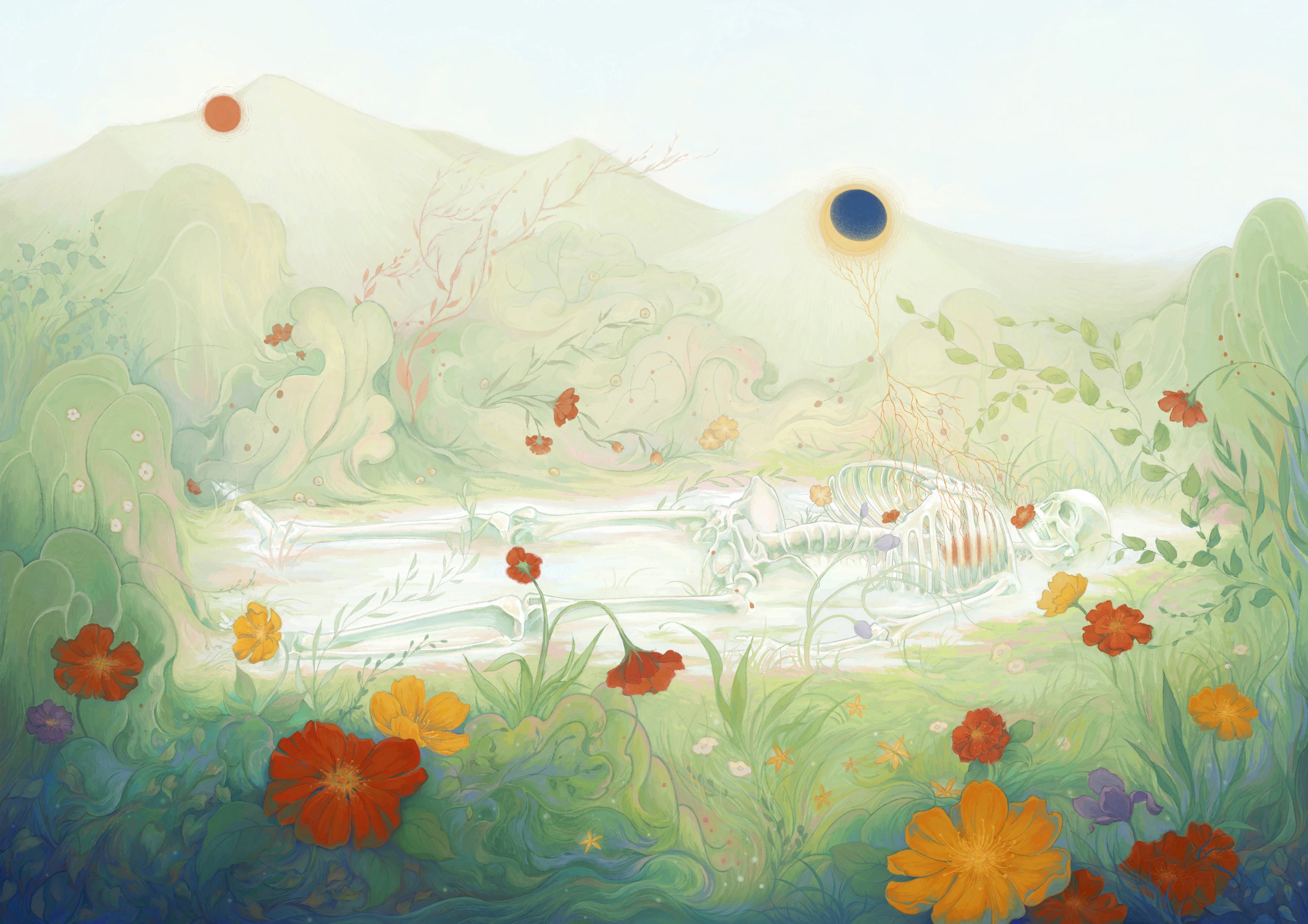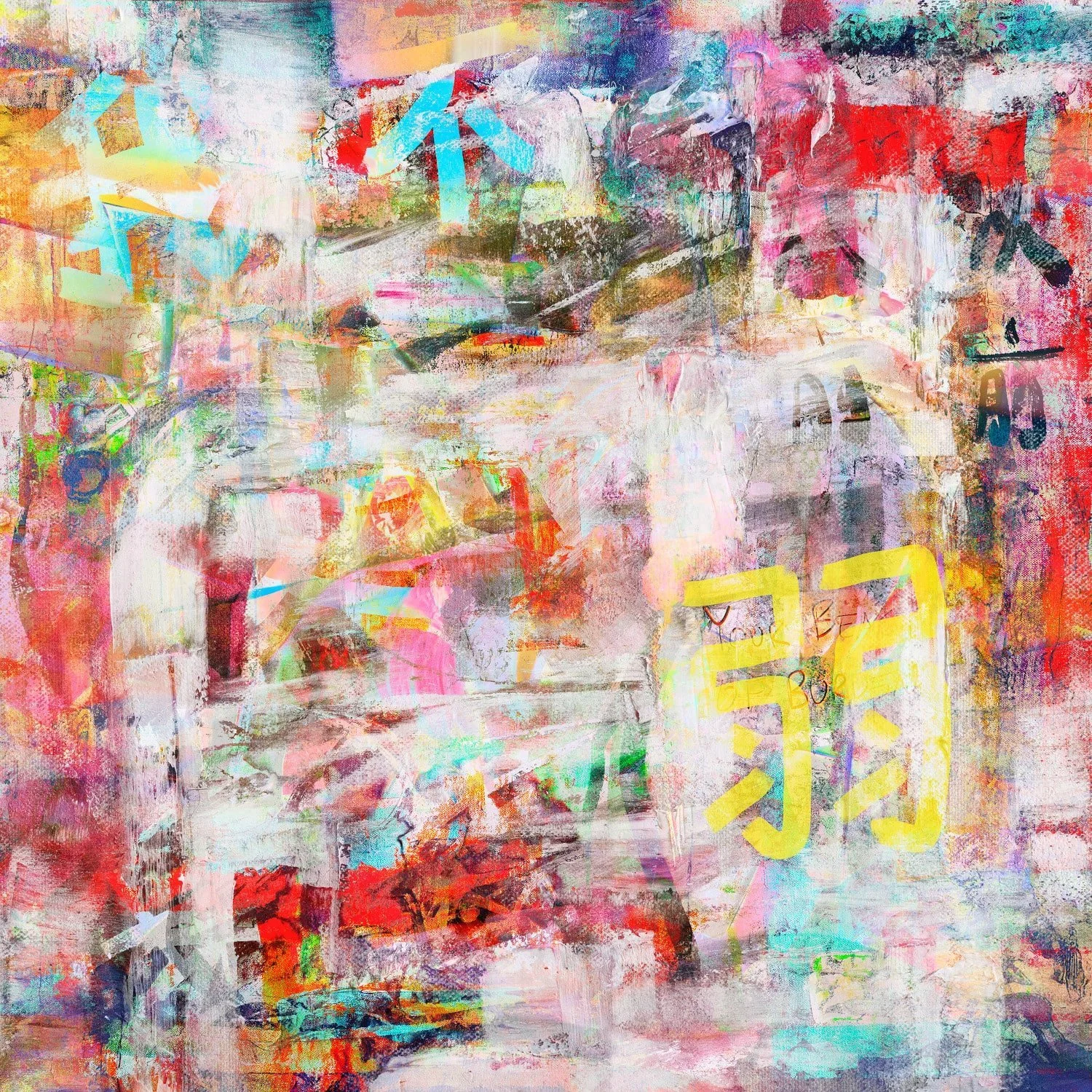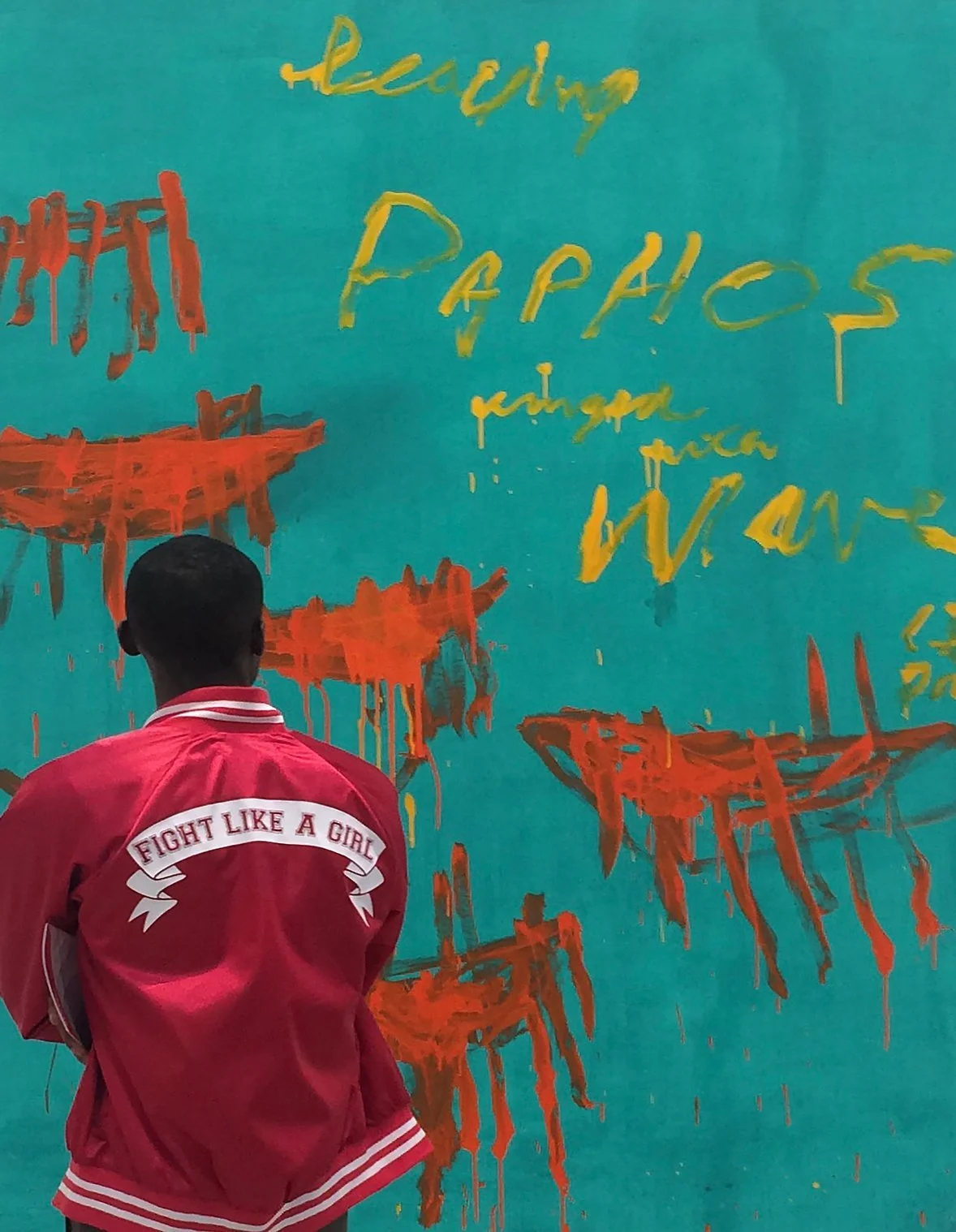10 Questions with Luna Xue
Luna Xue is a versatile visual artist whose practice spans painting, installation, 3D art, and bookmaking. With a background in illustration and extensive experience in the arts, her work explores themes of female identity, intergenerational trauma in Asian families, and sexual violence. Central to her practice is the act of storytelling, as both a deeply personal East Asian experience and a bridge for cross-cultural communication. Blending traditional techniques with contemporary perspectives, Luna creates powerful visual narratives that seek to form profound emotional connections with viewers.
Luna Xue - Portrait
ARTIST STATEMENT
“I was born and raised in Ningbo, China, where early experiences, whether through family influence, social environment, or personal challenges, shaped my sensitivity toward visual expression. I was raised by my grandfather, a local artist who specialised in Chinese calligraphy and brush painting. As my first art teacher, he took me to hiking trips, art exhibitions, concerts and encouraged me to talk about art and express my feelings.
As the only child of busy parents, my grandfather and his insight into art established my curiosity and love for various art forms and styles, which later became the soil of my inspiration.
I went to Edinburgh College of Art (University of Edinburgh) and studied illustration in the MA program, where I started telling stories about myself as learning more about my past and the past of a long line of women in my hometown.
My practice often responds to personal and cultural themes rooted in my background, including but not limited to family history, childhood memories and female identity. Rather than adopting inherited beliefs or dominant narratives, I engage with them critically, through painting, installation, or mixed media.
As someone who has been practising recognising and healing from childhood trauma, a pivotal moment came when I found myself telling stories about so many others and hearing responses from so many others with immersive installations. This transition allowed me to find connections with my roots and allows me to keep getting nurtured through making my creative work.”
— Luna Xue
What Was Taken 01, Digital Painting, Variable size © Luna Xue
INTERVIEW
First of all, how did your journey as an artist begin, and what initially drew you to visual storytelling?
My journey began with a deep fascination for images as a child; I used to spend hours drawing on my own. But it wasn't until my teenage years, during a particularly isolating period, that I began using visual storytelling as a way to express emotions I couldn't verbalise. One of my earliest pieces, a hand-sewn patchwork of a girl surrounded by dark, abstract shapes, marked the beginning of this language. It made me realise that storytelling through images gave shape to the things I couldn't say.
Your grandfather played a big role in your early artistic life. What are some lessons or moments with him that continue to inspire your work today?
My grandfather was the first person who took my drawings seriously. He used to sit beside me and draw too, mostly old-style birds and flowers with a brush. He never corrected me, just quietly encouraged. One thing he said that stayed with me was: "Draw how you feel, not just what you see." That idea, of letting inner emotion guide the hand, still shapes how I work today.
Burning Permafrost 01, Etching, A5 © Luna Xue
You work across painting, installation, 3D art, and bookmaking. How do you choose the right medium for each story you want to tell?
The story itself tells me. Some ideas need the intimacy of a handmade book, something you hold close and flip through slowly. Others demand physical presence, like installations that surround you or invite you to walk into them. I think a lot about how the viewer will experience the work, physically and emotionally. Each medium has its own language, so I try to listen carefully before choosing.
What drew you to illustration, and how has your background in that field influenced your current practice?
Illustration taught me clarity and narrative flow. During my years as a freelance illustrator, I developed an ability to distil complex ideas into a single image or sequence. That discipline still informs my fine art today. In "Kids Talking", for instance, a zine-style book I created after recording conversations with children about secrets, I combined simple, almost cartoonish line drawings with brutal honesty in their quotes. The result feels deceptively light, but the emotional gravity comes through.
Much of your work deals with intergenerational trauma and female identity. How do you approach translating such deeply personal themes into visual form?
I don't try to illustrate trauma directly. Instead, I create environments where its echoes can be felt. I use metaphor, repetition, and absence. A bed with no one in it, a dress suspended midair, a fragmented letter. These are ways to speak without declaring, to allow the viewer space to project their own experiences. I believe the personal is always political, and the visual is often more honest than language.
Echoes Between the Seams, Fabric collage, 30x15 cm © Luna Xue
Salt and Silence, Print, A4 © Luna Xue
You mention that your installations helped you connect with others who had similar stories. How has audience interaction shaped your work?
It has changed everything. After showing "What Was Taken", I received letters from strangers who had never told anyone their stories. That project included a participatory wall where viewers could leave anonymous messages, they turned it into a living archive. I now see my role not just as an artist, but also as a facilitator of shared memory. In more recent works, like "Resonance", I invite viewers to contribute sounds or words that resonate with their own losses, which I later incorporate into future work.
What role does memory, especially childhood memory, play in your creative process?
Memory is the raw material of almost everything I make. Childhood memories in particular, they're distorted, mythologised, unreliable, and that makes them powerful. I revisit them not to recreate the past, but to understand its residue: how it shaped my fears, my desires, my silences.
Do you see storytelling in your work as a form of healing, both for yourself and for others?
Yes, but not in a linear or resolved way. It's not about closure. It's about giving form to what was once unspeakable. In that act, something shifts. It becomes less lonely. I think healing can be a side effect of truth-telling, when done vulnerably, without agenda.
What Was Taken 02, Digital Painting, Variable size © Luna Xue
What Was Taken 04, Digital Painting, Variable size © Luna Xue
What message or feeling do you hope viewers walk away with after experiencing your work?
I don't aim to deliver messages. I hope they feel something, discomfort, recognition, tenderness. If someone walks away thinking about their own childhood, or calls their mother after seeing my work, that's enough. I want to create spaces where people remember things they've forgotten how to feel.
And lastly, what are your plans for the future? What are you working on at the moment, and where will we see you next?
Right now, I'm working on a new series that uses fragmented textiles and family documents to explore erased female histories. I'm also preparing for a group exhibition in London next spring, where I'll be showing an immersive installation built around themes of silence and survival. In the longer term, I'd love to publish an artist book that weaves visual work with poetry and personal writing.
Artist’s Talk
Al-Tiba9 Interviews is a promotional platform for artists to articulate their vision and engage them with our diverse readership through a published art dialogue. The artists are interviewed by Mohamed Benhadj, the founder & curator of Al-Tiba9, to highlight their artistic careers and introduce them to the international contemporary art scene across our vast network of museums, galleries, art professionals, art dealers, collectors, and art lovers across the globe.





















